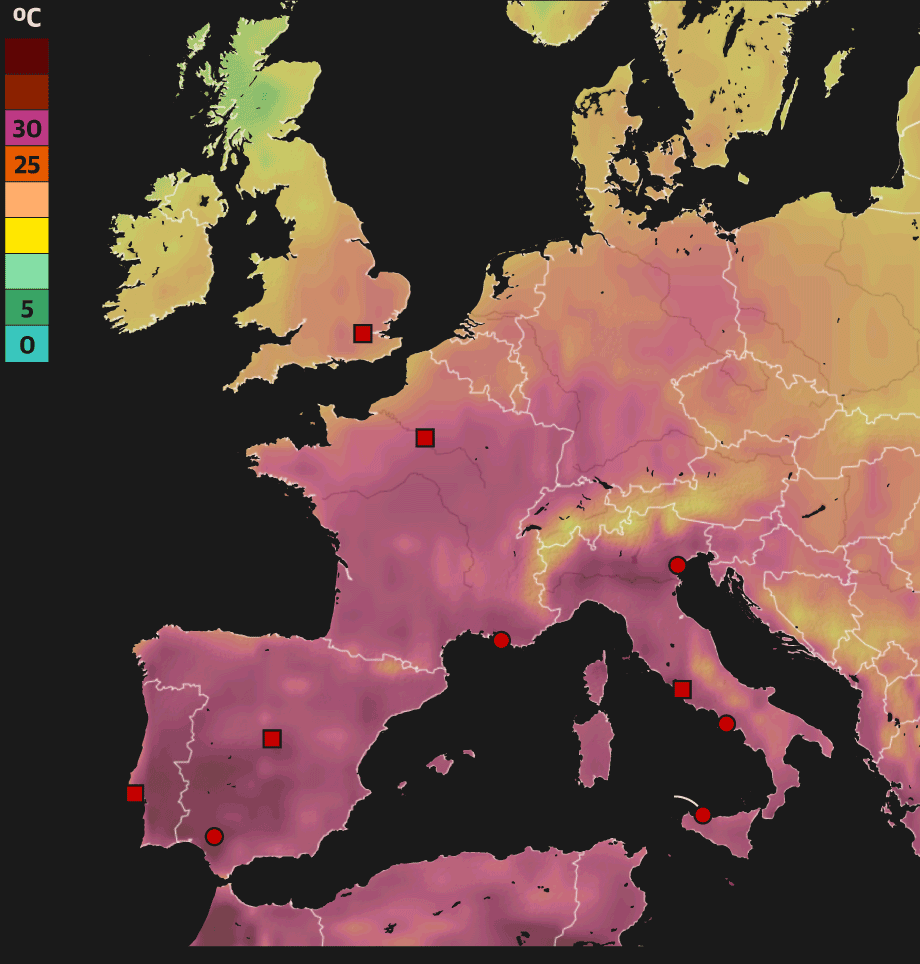🌡️ Europe Faces Unprecedented Temperatures
Europe is currently facing one of the most extreme heatwaves in recorded history. In early July 2025, temperatures soared to over 46°C (115°F) in parts of Spain, Portugal, and southern France, triggering red alert warnings, emergency measures, and health advisories across multiple countries.
According to the European Centre for Medium-Range Weather Forecasts (ECMWF), this intense heat event is starting earlier and lasting longer than previous years, indicating a disturbing trend linked to climate change.
“Heatwaves like this, especially so early in summer, are becoming the new normal,” says Dr. Hannah Cloke, climate scientist at the University of Reading.
🔥 Countries Hit the Hardest
- Spain: Seville and Córdoba recorded highs of 46.2°C, forcing local authorities to close schools and cancel public events.
- France: Paris reached over 41°C, with Météo-France issuing national heat alerts and opening public cooling shelters.
- Italy & Greece: Hospitals report a rise in heatstroke and dehydration cases, especially among the elderly and outdoor workers.
🌍 What’s Driving This Heatwave?
The current heatwave is linked to a persistent high-pressure system parked over Western Europe, trapping hot air and preventing cooler winds from the Atlantic. Scientists point to a combination of:
- Rising global average temperatures
- Prolonged drought conditions in Southern Europe
- Urban heat island effects in major cities
Climate experts warn that Europe is warming at twice the global average, making these events not only more frequent but also more deadly.
🛑 Health & Safety Measures
Authorities are urging citizens to:
- Stay indoors during peak hours (12 PM – 6 PM)
- Drink plenty of water
- Avoid strenuous outdoor activities
- Check on vulnerable populations
Many countries are testing new heat response systems, including mobile hydration stations, “cool rooms” in libraries, and emergency alert apps for smartphones.







